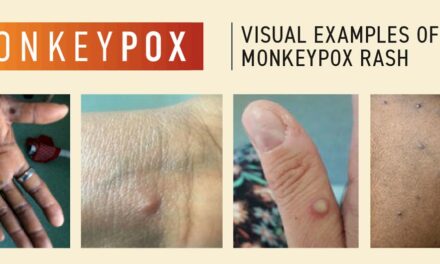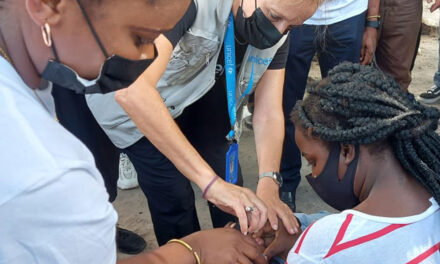
A new study has been published in The Lancet Global Health showing that almost 1 in 3 men over the age of 15 are infected with at least one genital human papillomavirus (HPV) type, and 1 in 5 are infected with one or more of what are known as high risk, or oncogenic, HPV types. These estimates show that men frequently harbour genital HPV infections and emphasize the importance of incorporating men in efforts to control HPV infection and reduce the incidence of HPV related disease in both men and women.
The systematic review and meta-analysis assessed the prevalence of genital HPV infection in the general male population based on studies published between 1995 and 2022. The global pooled prevalence was 31% for any HPV and 21% for high-risk HPV. HPV-16 was the most prevalent HPV genotype (5%) followed by HPV-6 (4%). HPV prevalence was high in young adults, reaching a maximum between the ages of 25 years and 29 years, and stabilized or slightly decreased thereafter. Pooled prevalence estimates were similar for the UN Sustainable Development Goal geographical regions of Europe and Northern America, Sub-Saharan Africa, Latin America and the Caribbean, and Australia and New Zealand (Oceania). The estimates for Eastern and South-Eastern Asia were half that of the other regions.
The majority of HPV infections in men and women are asymptomatic, but they can lead to long-term sequelae and mortality. Each year, more than 340 000 women die of cervical cancer (1). In men, HPV infection tends to manifest clinically as anogenital warts, which cause significant morbidity and increase HPV transmission rates (2,3). HPV infections are also associated with penile, anal and oropharyngeal cancers, which are commonly linked to HPV type 16 (4,5). The International Agency for Research on Cancer estimated that there were about 69 400 cases of cancer in men caused by HPV in 2018 (2). 
“This global study on the prevalence of genital HPV infection among men confirms how widespread HPV infection is. HPV infection with high-risk HPV types can cause genital warts and oral, penile and anal cancer in men. We must continue to look for opportunities to prevent HPV infection and to reduce the incidence of HPV-related disease in both men and women,” said Dr Meg Doherty, Director of WHO’s Global HIV, Hepatitis and Sexually Transmitted Infections Programmes.
References
1. Sung H, Ferlay J, Siegel RL, et al. Global Cancer Statistics 2020: GLOBOCAN estimates of incidence and mortality worldwide for 36 cancers in 185 countries. CA Cancer J Clin 2021; 71: 209–49
2. C de Martel, D Georges, F Bray, J Ferlay, GM Clifford, Global burden of cancer attributable to infections in 2018: a worldwide incidence analysis, Lancet Glob Health, 8 (2020), pp. e180-e190
3. AR Giuliano, G Anic, AG Nyitray, Epidemiology and pathology of HPV disease in males, Gynecol Oncol, 117 (suppl) (2010), pp. S15-S19
4. S de Sanjosé, B Serrano, S Tous, et al., Burden of human papillomavirus (HPV)-related cancers attributable to HPVs 6/11/16/18/31/33/45/52 and 58, JNCI Cancer Spectr, 2 (2019), Article pky045
5. S Varga, X Wang, K Luttropp, et al., Global burden of HPV-related cancers in men: a systematic literature review, J Clin Oncol, 37 (2019), Article e13108










